Diana+ Camera Review
There's something to be said for the latest camera bodies and professional grade lenses — it certainly seems to be the focus of many photographers. But there's also something to be said for a cheap plastic camera body and an equally cheap plastic lens. Meet the Diana+ from Lomography.
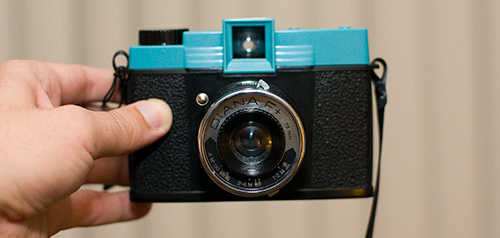
This review is my own entry to my $50 Film Camera Project. With a price tag of $50, the Diana+ fits right in to the project requirements. This also happens to be the camera that Lomography is giving away to three lucky winners (along with 10 rolls of film from Ilford Photo). I purchased this camera (and yes, I bought it), not because it's a prize for the project, but because I've been wanting one for a while now. So let's get into this review…
THE TECHNICAL STUFF
The Diana+ camera is almost completely made of plastic, lens and all. It is a medium format camera that takes standard 120 rolls of film. It can produce 5.2cm x 5.2cm shots at 12 per roll, 4.2cm x 4.2cm shots at 16 per roll, or panoramic images. These different formats are achieved by using a specific mask in the camera body.
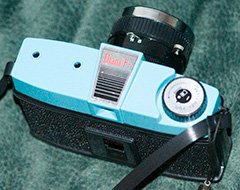
The shutter speed on the Diana+ has two settings: “Normal” and “Bulb”. The normal setting gives you about 1/60 seconds of exposure, while the bulb exposes for as long as you hold the shutter. The shutter release is located on the lens barrel along with the shutter mode adjustment. Bulb is intended to be used for pinhole photos or dimly lit situations (or whatever other reason you may want to use it for).
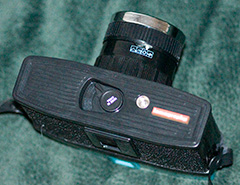
The aperture has four settings: “Sunny”, “Overcast”, “Cloudy”, and “Pinhole”. This setting can be adjusted on the bottom of the lens barrel. The indicated apertures are intended to be used with ISO400 film. Using a slower or faster film means that you'll have to compensate for the difference in exposure. The pinhole setting will require the use of the bulb shutter setting.
The focus is controlled by twisting the actual lens. It's kind of a guess, and the lens has three indicators: 1-2M, 2-4M, and 4M+. Since the camera is a viewfinder, you don't actually “see” the focus — just the framing. And speaking of framing, just watch out for that parallax error!
Other than that, there are a few other technical aspects to operating the camera: lens removal for pinhole photos, double exposures, panoramic exposures, setting bulb exposures for pinhole shots, etc. But in general, the camera is very easy to use because of the minimalistic approach to the camera controls. Watch out though — just because it's considered a “toy camera”, this doesn't mean that you don't have to think about what you're doing from time to time. You still have to set the exposure, compensate for lighting conditions and film speeds, watch out for parallax error, remember to wind the film, set your focus, and so on.
And the best part of this camera… no batteries! I've really come to embrace a camera that can operate without electricity. It's so liberating!
THE INTERESTING STUFF
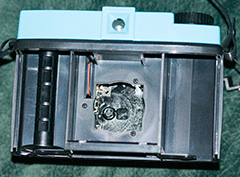
The most interesting aspect of the Diana+, to me, is the fact that it's so basic. Once you open it up to load the film, you basically see a big empty space. You think to yourself “where's all the… stuff?” I mean, there's really nothing to it. You've got a piece of plastic as a lens, then a plate with a few holes in it for the aperture, then a simple little mechanism for the shutter. Other than that, you've got a couple of spots to hold the film spools, and a little window to look through.
This is all very interesting because the camera also uses medium format film, which is typically used in higher-end cameras. But this coupling of simple technology with medium format film goes back to the days of the original Diana camera. Back then, 120 film was more of a standard than it is today because 35mm film hadn't become popular until the late 1960's. Prior to that, most cameras used 120 film or other formats that have basically been phased out.
THE QUIRKY STUFF
For as basic as this camera is, you have to expect things to be a little different than your shiny new digital camera. Most of the stuff is easy to get adjusted to, but there are a few things that come off as a little quirky. Nothing that would prevent me from using the camera though.
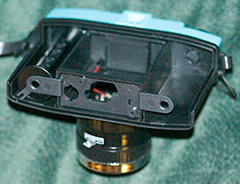
My biggest issue with the Diana+ is the film loading procedure. 120 film is sort of painful to load, but this camera doesn't make it any easier. The spool holders are pretty flimsy and don't really hold the spools in place before the back is placed on the camera. The spools have a tendency to pop out of place and thwart your efforts to get the film started. I'm sure this will get easier with experience, but it's pretty frustrating when you spend 5 to 10 minutes loading a roll of film.
The other thing that got me was the viewfinder. Yes, I totally forgot about the parallax error. But I was also under the assumption that the viewfinder showed less of the scene than would be captured on the film. The opposite was true with my particular camera, and this caused me to crop out a few things on a couple of photos.
THE INSPIRATIONAL STUFF
This camera is such a kick in the creativity, I can't even fully describe it with words. When the Diana+ is in your hands, you see things differently. You act differently. You take photos differently.
There's a certain amount of “letting loose” that occurs with this camera. Some of it probably results from the photos that most of us have seen from these cameras (or similar cameras such as the Holga). If you let it, the camera will allow you to take the mindset of “don't think, just shoot” — which is one of the mantras of Lomography (and I suggest you take a look at the 10 golden rules of Lomography to get a better feel for this stuff). This is also probably a result of knowing that you don't exactly have a Hasselblad in your hands — if your framing or focus is slightly wrong, who cares?!
I found myself “shooting from the hip”, trying double exposures, taking long exposures without a tripod, and not giving a crap about straight horizons. The photos won't come out completely perfect, so why shoot for perfection? You end up with heavy vignette, occasional light leaks, lens flare, and motion blur — and all this stuff adds to the mood of the photos produced. Without these things, Lomography just wouldn't be Lomography.
In conclusion, the Diana+ is a really awesome camera! It's so different than your typical digital camera, and it can really open your eyes to a completely new world. For $50, you can't beat it. I would definitely suggest this camera to any photographer wanting to get a little crazy with their stuff.
MY TEST PHOTOS
So here it is. I shot 3 rolls of film in my Diana+ one day after I got it in the mail. The project only calls for one roll of film to be posted, but I wanted to show how different the results could be with different types of film. I shot a roll of black and white (Ilford HP5 Plus, ISO400), a roll of color slide film cross processed (Kodak Ektachrome E100VS, ISO100), and a roll of color negative film (Expired Konica Centuria 100, ISO100 that The_Wolf_Brigade sent me). You can see the entire set on Flickr. Here are two of the best shots from each roll:
And here are the rest of the shots from each roll:
If you're still contemplating whether or not to participate in this project, think long and hard about what you might be passing up. Like I said, we're giving away one of these cameras plus ten rolls of film to three winners. And be sure to look back at the project announcement — I've added links to five project entries as good examples of what I'm looking for.
And you know what? The hardest part of shooting film… is deciding to shoot film. Once you get over that little hump, a whole new world opens up for you.
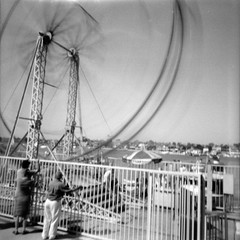
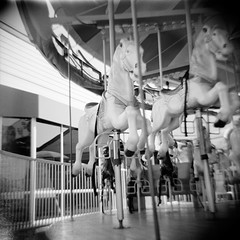
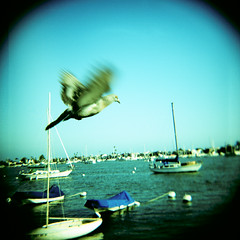

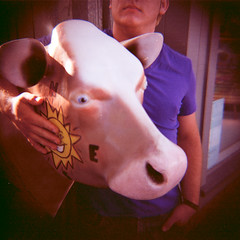

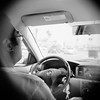
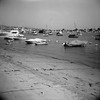

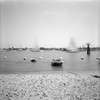

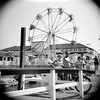
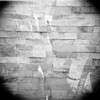



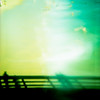
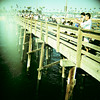
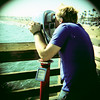
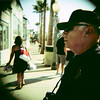
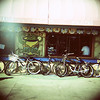
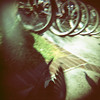
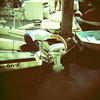

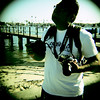
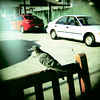
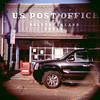
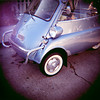



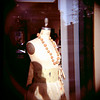
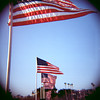
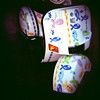
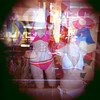
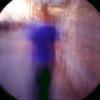
Jim Goldstein
August 25, 2008Great to read that you’re getting inspired so much from film and the experience of using the Diana+. Funny thing is I read about all the pains of film cameras and it reminds me how much I don’t miss film. I think I’ve moved strongly in the opposite direction of you. Not that there’s anything wrong with that. If I use film it is with a very specific purpose these days. Perhaps its all the difference of having started with film vs. digital.
Raquel
August 25, 2008Your pics have made me want to have a Diana even more. Yes, I am working on my $50 Film Project as well. Hope to develop and post loads of film soon.
I enjoy your web log! Thanks!
jerry
August 25, 2008Great review, Brian! Looks like you had a blast with this camera. Having fun with photography? Who woulda thought it?? =)
Love the shots, I am off to look at some more of them (and read Tom’s review of his camera)
Joe Reifer
August 25, 2008The bird and cow shots are my favorites. The bigwheel photo exhibits the dreaded Diana+ donut flare that was present in about 30% of the images shot with 2 different copies of this camera.
Chica
August 25, 2008I didn’t realize there were links to the project there! Some cool stuff coming in. Your photos have me wondering which is which. some have the vignetting, and some don’t. those must be the different modes then? I like the purple dress photo, I didn’t even know it was a dress! 🙂
Brian Auer
August 25, 2008@Jim – I think our difference in origins has a lot to do with our current preferences. If I had been introduced to photography with film, I may not have the same inclinations that I do now.
@Raquel – I hope to see your review soon!
@Joe – I had a few turn out with that donut flare… probably not quite 30% though. It’s not totally a bad thing — kinda adds to the interesting aspect of the camera.
@Jerry I know, blasphemy right? It’s not to say that I don’t have fun with any camera, but this was a much more relaxed experience than usual.
@Chica I just put up links to a couple of the reviews so people could have some good examples from a few different publishing platforms. For my photos shown, the ones on top are the HP5, the ones in the middle are the xpro Ektachrome, and the ones on bottom are the Konica Centuria. The photos with no vignette were shot as pinhole photos with the lens removed. The photos taken with the lens attached have varying amounts of vignette probably depending on the aperture and the lighting conditions.
Travis Campbell
August 25, 2008Man, I so want one of these cameras now. Thanks Brian, really … like I needed another thing to lust after. *grin*
Richard Wong
August 26, 2008Gotta give you credit for trying different things Brian. During my grad school orientation in 2002, a girl who was sitting next to me in the auditorium was a photography major and happened to be my neighbor was telling me about how excited she was to have picked up this plastic camera that had light leaks all over the place. Given that I was a nature photographer, that was almost like a foreign language to me and coudln’t really picture in my mind what she was describing.
Reading about this and the Holga reminded me of that day. Good times indeed.
Brian Auer
August 26, 2008@Travis I too have a long list of cameras to be lusted after.
@Richard Yeah, these cameras are certainly not for everyone. I wouldn’t expect a stock photographer, product photographer, sports photographer, nature photographer, etc, to get excited about these things. They’re fairly popular in the world of fine art and alternative photography though.
the_wolf_brigade
August 27, 2008I’m so counting down the days till the 12th…. 😀
Victor
August 27, 2008great issue !
thinking about some Holga 120 new cam from the Ebay
good luck everybody !
Lexie
August 28, 2008Oh man. I suddenly miss using my Holga. I have never tried the Diana+, but a good friend of mine has one (we bought our cameras at the same time, I bought a Holga, he bought a Diana+) and it seems like the results are pretty similar.
Hitesh Sawlani
September 6, 2008Great review, have to say, I do feel like playing around with one of these cameras now !
Jim
October 30, 2008I agree with ‘sports binoculars’. you can’t get those images without a lot of work with photoshop. I want to shoot, not compute. Film is still fun.
Zoe Hellar
December 22, 2008You can buy a reasonably equipped digital camera for under $100.The photos are good enough without having to use Photoshop
aaron blair
March 16, 2009hey brian, or maybe anyone who feels they can answer this question, I was just wondering how you got the pictures onto the computer, like without losing too much of the photo quality. thanks
Brian Auer
March 16, 2009With a scanner. Some have the ability to scan film using a backlight at very high resolutions. My medium format photos usually scan in at about the equivalent of 50 megapixels. I use a Canon Canoscan 8400F, but I’m looking to upgrade to the newer Canoscan 8800F.
aaron blair
March 17, 2009oh ok, thank you. one more thing, im new to film photography, and was wondering if i needed complete darkness to unload the used film and if I could take it to like a local walmart or CVS to get the film developed.
Brian Auer
March 17, 2009You don’t need complete darkness to unload the film from the camera — you just have to make sure you rewind it if it’s 35mm, and if it’s 120 format (like the Diana takes) you have to finish winding the entire roll so the film stays light tight. After you pull a finished roll of 120, you have to seal it with the little sticky tab attached so the film doesn’t unwind itself. You’ll have to check your local shops to see if they can handle 120 film — some do, some don’t. Just call and ask.
aaron blair
March 21, 2009alright sounds good. thanks for all the help man, i appreciate it.